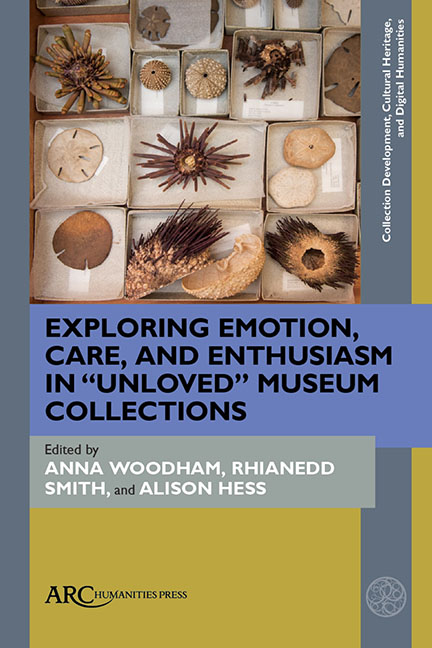Chapter 5 - No Data, No Use? Changing Use and Valuation of Natural History Collections
Published online by Cambridge University Press: 20 November 2020
Summary
Introduction
EVEN THE SMALLEST natural history collection has objects that number in the tens or hundreds of thousands. However, unlike other kinds of museums, until relatively recently, the value systems for natural history specimens have been measured on a strictly scientific basis. Treasures in natural history collections will often be rare specimens of extinct species or those collected by a few widely celebrated biologists, such as Charles Darwin and Alfred Russel Wallace. Even specimens collected by this rare category of biologists, whose research— in this case evolutionary theory— expands beyond natural history into sociology and philosophy, are often organized taxonomically rather than kept together as a discrete collection. Although these specimens may be a highlight of behind-the-scenes tours, or star specimens, their day-to-day management is, as for other collections of biological specimens, insects, birds, and crustaceans, filed away in correct taxonomic order. This singular approach to natural history collections was highlighted in 2009 during the international Darwin 200 celebrations, celebrating the 200th anniversary of the birth of Charles Darwin, in the fact that museums still could not answer the question on an institutional, national, or international level: where are all the Charles Darwin specimens? This remains the case today, with Darwin specimens spread across a number of museums, universities, and private collections but with no centralized effort made to bring these specimens together in a resource like the Darwin Correspondence Project for museum collections. This lack of connectivity and basic information about the natural history material associated with one of the most widely acknowledged and celebrated thinkers ever known speaks volumes about some of the challenges in natural history collections, let alone the management of “lesser” collections.
Underneath this top category are specimens that are perceived to be of more value than others by taxonomists: the name-bearing type specimens. Name-bearing type specimens, or “type specimens” for short, are the specimens on which original descriptions of new nominal species-groups are based. As such, they represent the gold reference standard, and the specimens or descriptions should be referred to in taxonomic work. Today, the designation and description of type specimens are tightly controlled by the relevant code publishing body: either the International Association for Plant Taxonomy for algae, fungi, and plants or the International Commission on Zoological Nomenclature for animals (Shenzhen Code, ICZN).
- Type
- Chapter
- Information
- Publisher: Amsterdam University PressPrint publication year: 2020



